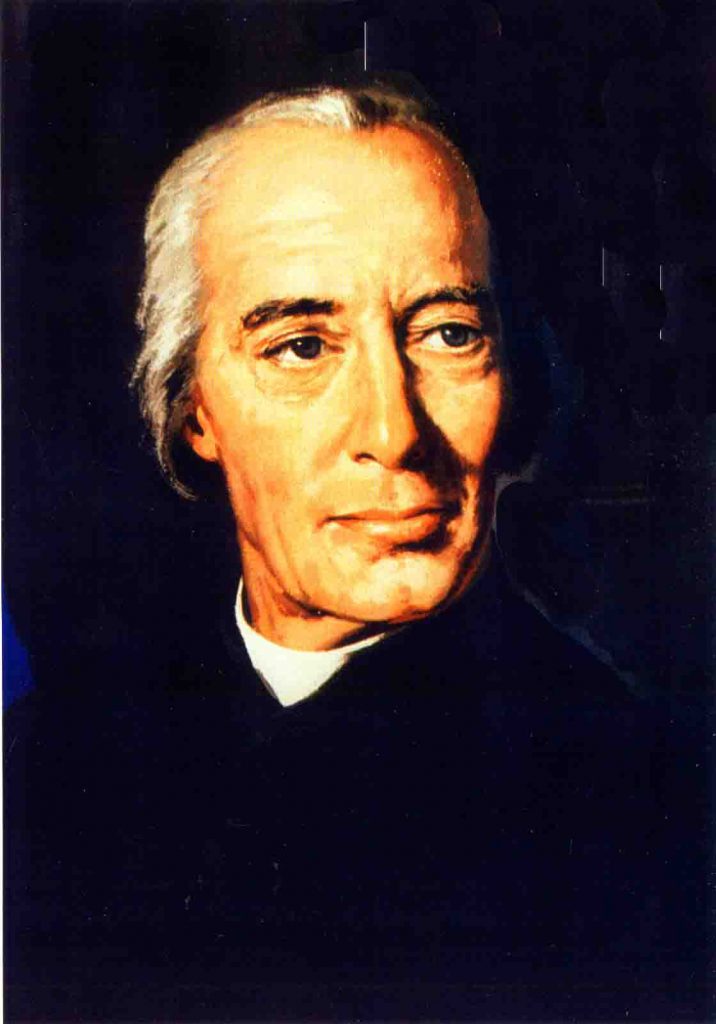Gallitzin, Father Demetrius Augustin
1840, May 6
Date of Birth: 1770, December 22
Dmitri Augustin Gallitzin was born at The Hague on December 22, 1770. His father, at the time Russia’s ambassador to Holland, had previously held the same post at Paris and was the friend of Voltaire and others like him. His mother, Amélie von Schmettau, daughter of the celebrated field marshal of that name, was a Catho1ic, but her religious upbringing had been very much neglected. She later studied her religion, and she faithfully fulfilled its duties from the day, August 28, 1786, when she received Holy Communion for the first time up to her death in 1806. Dmitri Gallitzin received an education befitting his station; he did well, especially in the study of philosophy and languages. Unfortunately, the study of religion was omitted from his program of study. Travel being the accepted finish to the education of a gentleman, Prince Gallitzin left for America. His pious mother entrusted him to a young, well-informed priest on his way to the United States as a missionary. They left from Rotterdam on August 18, 1792.
We do not know what went on in the mind and heart of the young prince during the voyage. But when he reached Baltimore on October 28th, the Russian Orthodox of the voyage’s outset was completely changed and was dreaming of becoming a Catholic priest. On his arrival he opened himself to Bishop Carroll to whom his mother had given him a letter of introduction. He also saw Father Nagot, whom the bishop had designated to look into the young man's fitness for the priesthood. With the approval of the venerable superior, Mr. August Schmet (or Smith – a name he had taken to safeguard his true identity during the voyage to America and which he kept long afterward) entered the Baltimore seminary on November 5, 1792, at the age of twenty-two. Almost as soon as he was ordained a deacon, he was admitted to the Society of St. Sulpice on St. Joseph’s Day, March 19, 1795. He was ordained to the priesthood by Bishop Carroll.
Although belonging to the Society, Father Gallitzin did not, however, take up work at the seminary. His already precarious health, the needs of the diocese lacking enough priests, his burning zeal for the salvation of souls, and a certain promise made to Bishop Carroll to devote himself to the diocesan ministry, were, with the approval of his superiors, sufficient reason to lock Father Gallitzin into the work of the missions. Therefore, the Bishop of Baltimore first sent him to Port Tobacco during the Easter time of 1795; then to Baltimore, where there were many Germans, whose language he spoke perfectly. In 1796 he was appointed to Conewago; from that base he travelled all around into Pennsylvania, Virginia and Maryland. Finally, on March 1, 1799, in response to the entreaties of some families settled in the Alleghanies, Bishop Carroll appointed the valiant missionary to found a parish there and to take care of it as well as the surrounding region.

Fr. Gallitzin
Father Gallitzin named his new mission Loretto. There, for the remaining forty years of his life, he worked with indefatigable zeal. He never allowed himself to be discouraged by hardships nor by the bigotry of all shades visited upon him. Along with his other works he became an outstanding controversialist, writing in defense of the Church as an antidote to that bigotry. Thanks to his zeal, more than 6000 Protestants returned to the bosom of the Catholic Church. Several times he declined promotion to the episcopacy; but he did become vicar-general of western Pennsylvania at the behest of Bishop Conwell, second ordinary of Philadelphia.
The venerable missionary, worn out by his apostolic labors, died on May 6, 1840, at the age of seventy.
Translated, condensed, and adapted from Bibliotèque Sulpicienne, Volume II, pp. 121-124.
